See Mount Fuji! Day Trip Stays, Inns And Access To Hakone

Hakone Onsen is popular with visitors around the world for its views of Mt. Fuji from hot springs. Here is information indispensable for enjoying Hakone: hot spring effects, day trip bathing spots, recommended ryokan and more.
Hakone Onsen: Fantastic Hot Springs Near Tokyo

Hakone is located in the western part of Kanagawa on the prefectural border between Kanagawa and Shizuoka, home to Mt. Fuji. Hakone Onsen, the hot spring area, was formed by the over 400,000 years of volcanic activity that Mt. Hakone has had.
In 1626, the Tokaido road (*1) was established as a highway toll road of sorts, in order to examine the people and items passing between the regions of Japan. With the development of this transportation route, many people began traveling through this way, which ultimately lead to the creation of the Hakone Onsen resort area.
After the opening of the Fujiya Hotel in 1877, a resort facility designed with non-Japanese visitors in mind, Hakone Onsen became a well-known hot spring resort among the international community as well.
The secret to the popularity of Hakone Onsen is its location. It is a luxurious spa area where you can enjoy hot springs while watching Mt. Fuji, Japan's most famous natural site, all the while remaining within a reasonable distance of Tokyo, the capital.
If you travel to Hakone from Tokyo, make sure to use the Hakone Freepass, a convenient two or three day ticket that includes transportation to and within Hakone, as well as rides on the Lake Ashi cruise and Hakone Ropeway.
*1 Tokaido road: an old highway road that connected Tokyo to Kyoto via a series of stops.
Enjoy Supreme Relaxation in Hakone's Hot Springs
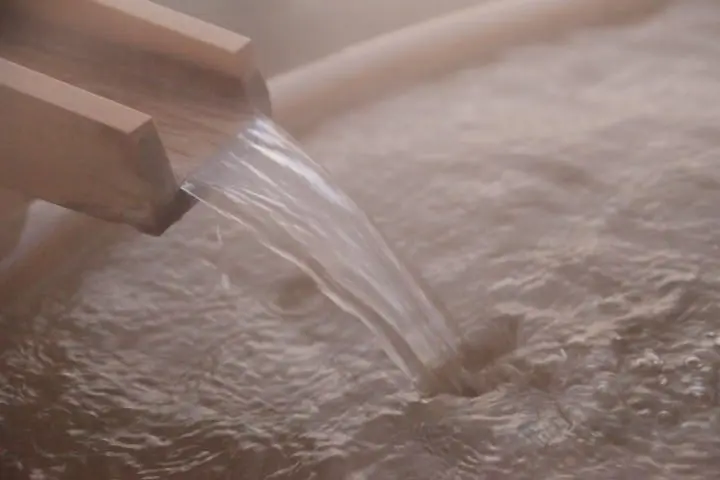
Originally, Hakone Onsen was known as the Hakone Seven Springs, as there were seven hot springs in the area, but at present, there are twenty springs spread out through five areas: Hakone Yumoto/Tonosawa, Gora, Miyanoshita/Kowakudani, Sengokuhara, and Ashinoko/Ashinoyu.
In order to comprehend the differences between the varieties of hot spring waters found in Hakone Onsen at a glance, signs are placed near the hot spring explaining their qualities.
- Tanjun Onsen: Simple Hot Spring, a spring that is good for the skin, does not have a particular odor. Said to have a positive effect on those suffering from insomnia or depression.
- Ryusanen Onsen: Sulfate Hot Spring, the main ingredient in this hot spring is positive ions, making it ideal for those with skin injuries, sensitivity to cold.
- Enkabutsu Onsen: Chloride Hot Spring, commonly called Netsu no Yu (hot water spring); the salt in this water clings to the skin, making it ideal for those suffering from dry skin and sensitivity to the cold.
- Iou Ensen/Sanseisen: Sulfur Saline Spring/Acidic Spring, both types of springs are said to have great sterilizing properties and are said to be particularly useful for those seeking relief from atopic dermatitis and other skin conditions.
- Tansansuisoensen: Bicarbonate Spring, called 'beautifying waters', these springs are meant to soften the keratin in skin (improving its condition) and are meant to help those with sensitivity to the cold.
- Other Springs: there are some hot springs that are quite unique, so it is better to check with the spring facility itself as to what the conditions of the water are.
How to Reach Hakone Onsen

Traveling from Tokyo
If you are traveling from Tokyo Station, you can take the JR Tokaido Shinkansen Kodama train to Odawara Station, and then from there take the Hakone Tozan line. For more information on the Tozan line, please see Hakone Tozan Line - Climb The Mountain By Train And Enjoy The Scenery!.
From Shinjuku Station you can either take the Odakyu Romance Car or the Odakyu highway bus, either of which will take you directly from Shinjuku to Hakone.
Remember to use the convenient Hakone Freepass to save on transportation costs and enjoy rides around Hakone.
Traveling from Osaka
Take the JR Tokaido Shinkansen Hikari from Shin-Osaka Station to Odawara Station, then transfer to the Hakone Tozan line and get off at Hakone Yumoto Station. It will take about three hours, and cost 12,410 yen, one way.
Traveling from Fukuoka
By Train
From Hakata Station first take the JR Sanyo Shinkansen Nozomi to Shin-Osaka Station, then change to the JR Tokaido Shinkansen Hikari and get off at Odawara Station, where you will need to transfer to the Tozan line for Hakone. This route will take about five hours, and cost 20,950 yen one way.
By Plane
Between Fukuoka Airport and Haneda Airport, four airlines operate more than 50 flights daily. After arriving at Haneda Airport, the Odakyu Hakone Express Bus 'Hakone Yumoto Air Liner' is the most convenient means of traveling to Hakone. However, since only two lines are operated a day, please be aware of your travel times.
Reaching Hakone Onsen from Hakone Yumoto Station
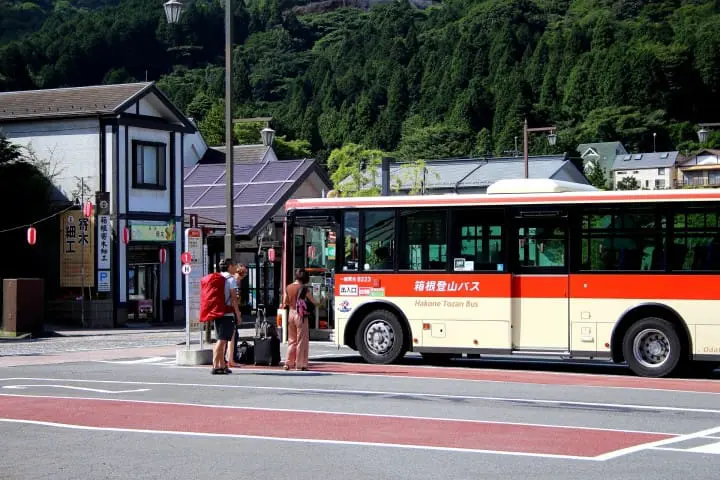
Since the Hakone Tozan line runs from the entrance of Hakone Onsen, from Hakone Yumoto Station to Gora, you can easily access hot springs in Tonosawa, Miyanoshita, Kowakudani and the Gora area by using this train. Before arriving in Gora, make sure to use the Hakone Tozan Cable Car and Ropeway.
There are also the Izu Hakone and Hakone Tozan buses that have routes through Hakone, which makes it convenient to get around as well. While you may be tempted to take a taxi to reach your inn, some inns actually have a free shuttle service to the nearest train station, so please inquire about these when making your reservations.
See Beautiful Nature and Hot Springs! The Best Places in Hakone - A Guide to learn more.
Day Trip Hot Spring Spots in Hakone Onsen
Hakone Yuryo
This is the place to go if you would like to spend a day in luxury. There is are five types of baths available (large public bath, indoor baths, onsen made from rocks, Shigaraki baths (personal sized baths), rotemburo (open-air baths)), and nineteen private rooms with their own private baths that can be reserved, making this an excellent place for a hot spring day trip.
Hakone Yuryo
Address: Kanagawa, Ashigara-gun, Hakonemachi, Tonosawa 4
Fee: (large public bath) Adults 1400 yen, children 700 yen (tax included, bath tax also included)
Website: Hakone Yuryo
Yu Asobi Tokoro Hakone no Yu
There are indoor baths, bubbling baths made with fine foam, hot wave baths, Jacuzzi type baths and peaceful baths - four types of open-air baths to choose from. This hot spring has point cards and ticket books as well, making it very popular with repeat customers.
Yu Asobi Tokoro Hakone no Yu
Address: Kanagawa, Ashigarashimo-gun, Hakonemachi, Yumotochaya 100-1
Fee: Adults 1050 yen, children 500 yen (tax included, bath tax also included)
Website: Hakone no Yu
Yu no Sato Okada
There are fifteen types of baths available at the Hakone Yumoto day trip spring facility. Here you can also move between five different types of open-air baths, including indoor hot springs, rock springs, and Jacuzzi type springs. Family baths are also available, wherein only members of your family may enter the given bath area.
Yu no Sato Okada
Address: Kanagawa, Ashigarashimo-gun, Hakonemachi, Yumotochaya 191
Fee: Adults 1450 yen, children 600 yen *Discount available for early morning bathing
Family baths reservations last for 45 minutes and cost 1100 yen (tax included, bath tax also included)
Website: Yu no Sato Okada
Recommended Ryokan in Hakone Onsen
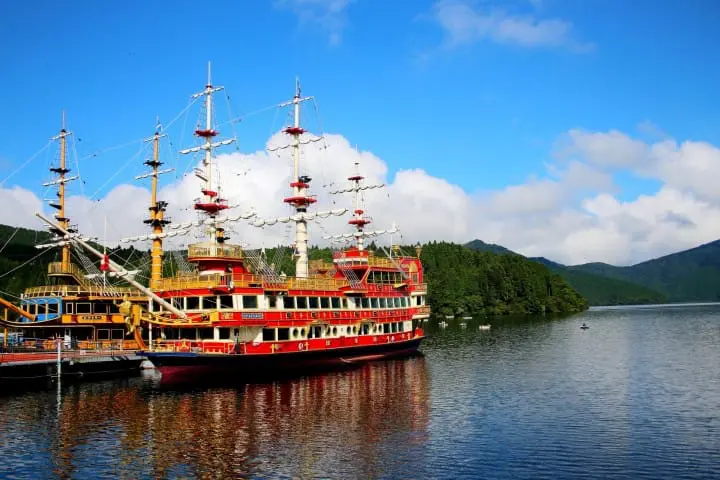
Hana no Yado Fukuya
If you would like to enjoy a luxurious stay in Hakone, we recommend this inn as each of the six rooms has its own private open-air bath, and there are also English-speaking staff on hand.
Hana no Yado Fukuya
Address: Kanagawa, Ashigarashimo-gun, Hakonemachi, Hakone 571-18
Website: Hana no Yado Fukuya
Motoyu Kansuiro
A long established ryokan in Gora, Moto Kansuiro has a history dating back 400 years and has been officially recognized as a Tangible Cultural Asset. In addition to the rotemburo and retro style baths, you can also experience their waterless stone sauna here as well.
Motoyu Kansuiro
Address: Kanagawa, Ashigarashimo-gun, Hakonemachi, Tonosawa 88
Website: Motoyu Kansuiro
Hakone Yumoto Onsen Yoshiike
This inn has a large Japanese garden with an open-air bath in the middle that patrons can freely enjoy. This inn also accepts day trip visitors as well.
Hakone Yumoto Onsen Yoshiike
Address: Kanagawa, Ashigarashimo-gun, Hakonemachi Yumoto 597
Website: Hakone Yumoto Onsen Yoshiike
Hakone Kowakudani Onsen Mizu no Oto
This is a spa hotel wherein you can enjoy two types of hot springs all within a single resort; the main building has Miyanoshita Onsen, while the new annex has the Kowakudani Onsen. There are thirteen baths to choose from as well as Western and Japanese style rooms for guests to stay in.
Hakone Kowakudani Onsen Mizu no Oto
Address: Kanagawa, Ashigarashimo-gun, Hakonemachi, Kowakudani 492-23
Website: Hakone Kowakudani Onsen Mizu no Oto (Japanese only)
Hakone Kamon
Including their rotemburo, there are ten different varieties of hot spring sources that guests can try at this inn, while on the top floor there are six guests rooms with their own private open-air baths as well. There are multi-lingual staff on duty as well, making this a popular resort for non-Japanese speakers.
Hakone Kamon
Address: Kanagawa, Ashigarashimo-gun, Hakonemachi, Yumoto 435
Website: Hakone Kamon
Points to Enjoy in Hakone Onsen
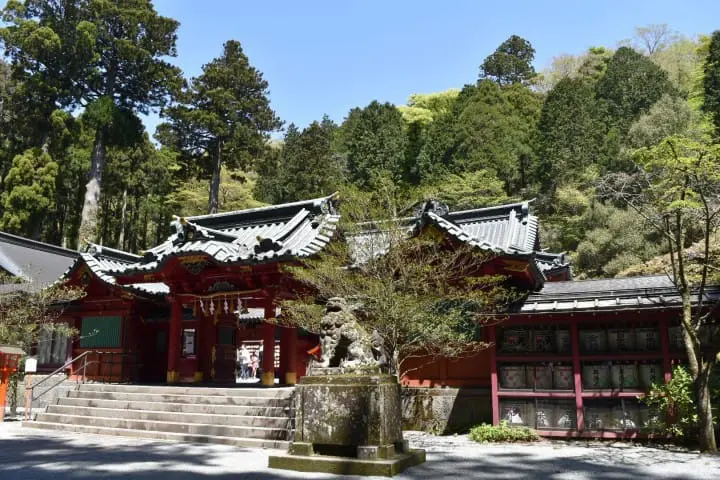
In Hakone, there are many museums to enjoy, like the Open-Air Museum, and the Pola Museum of Art, as well as stunning natural sights and historical spots like Hakone Shrine. You can also take in majestic views of Hakone from the lake cruise ship on Lake Ashiko.
When it comes to cuisine in the area, the simmer tofu sold at Tamura Ginkatsu-tei near Gora Station is particularly popular, while it is said that if you eat one of the kurotamago (black eggs) from Tamago Chaya near Hakone Owakudani, you will add seven years to your life. You can also find great local souvenirs like Chimoto's Yumochi and Kikukawa's Hakone Manju here as well.
Hakone has somewhat cooler summers than Tokyo and mild winters, but gets a lot of rain from June to September. If you are going to be traveling in the area, please also note that there are temperature differences due to altitude changes to consider as well, especially in the Owakudani area, where the altitude exceeds 1000 m.
To learn more about manners at a hot spring, please see What You Should Know About Bath Culture In Japan. Please note, some hot springs do not permit patrons with tattoos to use their public bathing facilities, while in-room or private baths are permitted. Please check in advance before making any reservations.
Hotels near Hakone Tourist Information Center
Read also
奈良生まれの旅好きライター。日本の魅力を世界の人々に伝えていきたいです。



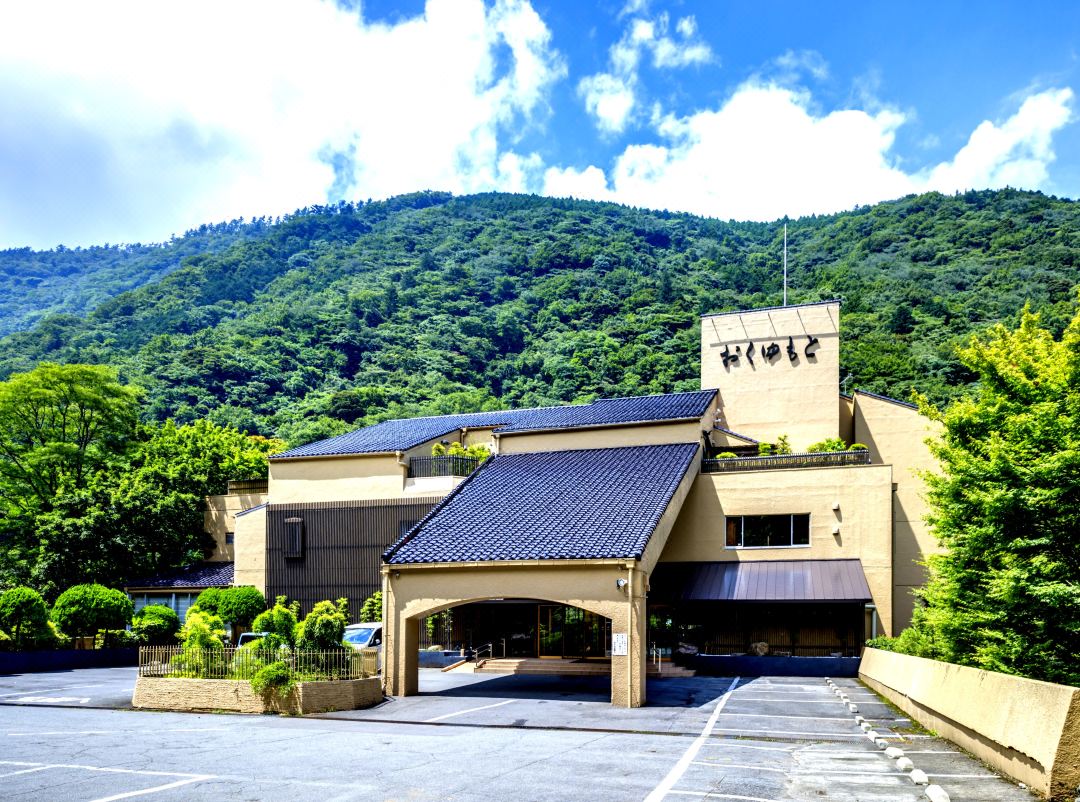

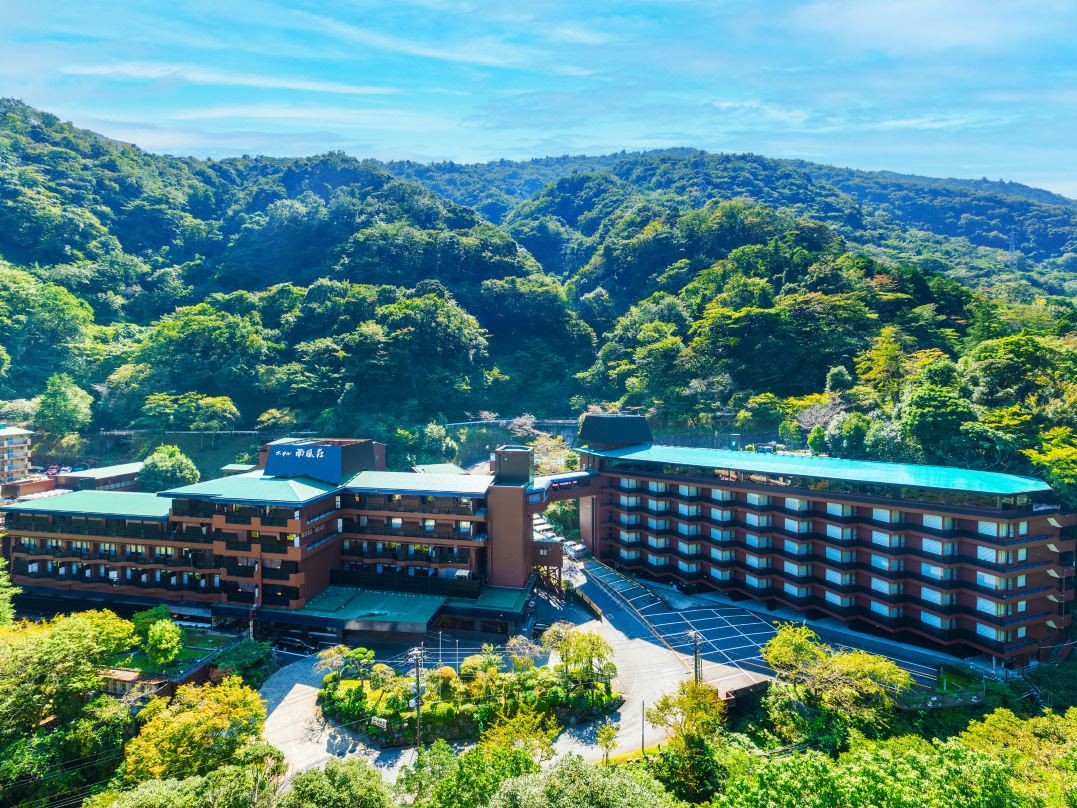
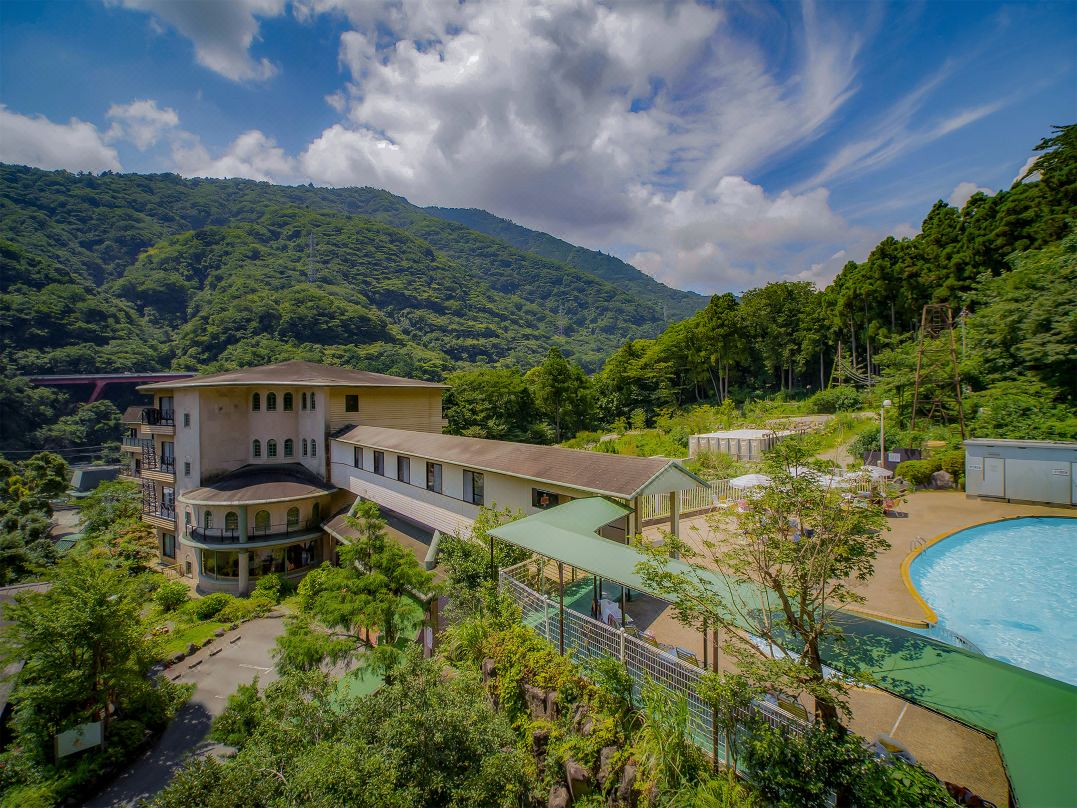









































![[Coupon Available] Attention Overseas Winter Sports Fans! Nagano's Sports Depot Has Evolved](https://resources.matcha-jp.com/resize/720x2000/2026/01/05-254819.webp)
![[2 hours from Tokyo ] 10 Quiet and Breathtaking Views of Mount Fuji in Yamanashi Hokuto City , Yamanashi - Part 2](https://resources.matcha-jp.com/resize/720x2000/2025/12/16-253037.webp)
